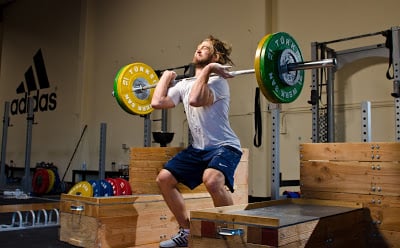
One of our athletes just returned from a physician’s appointment for low back pain, only to be told that “20% of young athletes performing weightlifting will develop some form of these problems.” Another doctor went on to explain that we are seeing more of these low back problems as a result of new, aggressive training at a younger age. As a physician and strength coach that only interacts with athletes, I can tell you that these statements are completely false.
A recent review out of the University of Texas, looked at 10 studies that focused on injury rate in adolescent athletes involved in weightlifting, and only 3 injuries were reported, representing about 0.5%, the lowest of any other sport. However, it is not these physicians’ fault, as they deal primarily with patients of all ages, rarely interacting with the high school, college, and professional athletes that we see at Sparta on a daily basis.
So where do these various forms of low back pain arise from? The more serious low back injury is a stress fracture of the lower back vertebrae, known as a spondylolysis, or “spondy” among the more sports-minded population. This injury is more common in adolescents, particularly those involved in extending and rotating the lower back. It was typically found almost exclusively in gymnasts due to the twisting motions and tradition of training year round for hours every day. However with the evolution of the club sport system, ranging from baseball to volleyball, athletes now train year round in a variety of sports, so we are seeing these injuries more and more.
So it is not the aggressive training that is new, but rather this year round playing of the same sport, and thus repetitive movements that athletes are exposed to. In fact, as stated previously, the reason strength training in physically immature athletes is both safe and effective is due to the means by which greater strength is achieved. A study out of Boston Children’s Hospital showed that strength gains in youth athletes are largely due to neuromuscular activation and muscular coordination. Essentially, young athletes’ muscles become “smarter,” instead of becoming bigger.
So rather than stop training your muscles through resistance exercise, we all must learn to take and encourage significant breaks from our chosen sport, allowing the body to rest from the same, repetitive movements or at least adapt to a whole new set of skills, whether it be weight training or a different sport.
But if you’re competing against our athletes, please refrain from any cross training, especially squats, as these silly resistance exercises will only make you more resistant to injury.